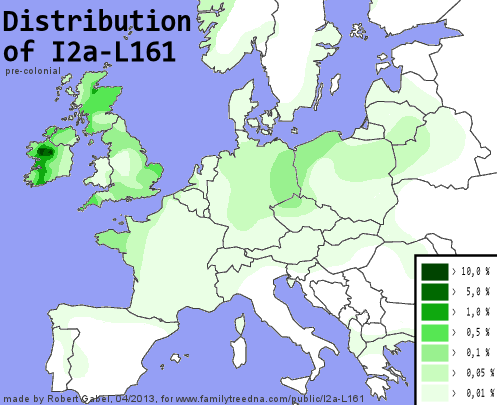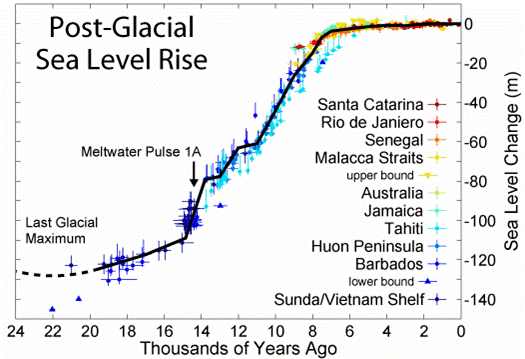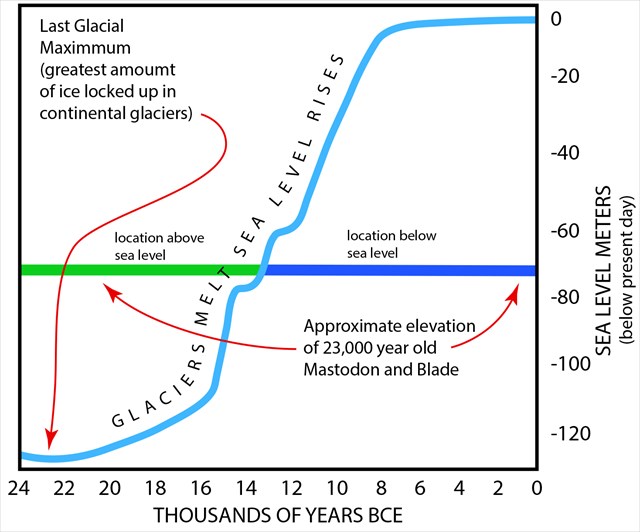Good idea to start this thread, Mozart! Indeed, I also believe that we need to look at I2 in general in order to learn more about what brought forward the quite distinct distributions of its various sub-clades. Since that will already be quite difficult to establish, I will for the time being refrain from discussing issues even further in the past, e.g. the IJ and I1-I2 splits. I furthermore think I1 needs a discussion on its own. So, I will focus my contributions on your questions 7-10, which already is quite a lot of questions to be answered in a single thread. As most of my ancestry is from around the Harz mountains, I am especially interested in I2a2, and will place a further focus there.
Where/When did I2a/b/c originate?
I have noted that both I2a-Din and I2a2 display a secondary frequency peak in/ around Bessarabia (Moldova and NE Romania). Historical movements fail to explain the I2b peak. The 19th century German settlement in Bessarabia was to scant in numbers (approx. 3.500 families), and its sources (upper Rhine, West Prussia/ East Pomerania) are not characterised by high I2b frequencies. In addition, the settlement was strongly religiously motivated, which should have limited gene flow into neighbouring populations. The East Germanic migrations might have transferred I2a2 from Northern Germany to the Black Sea, but in that case I2a2 should have become more equally distributed across Southern Ukraine and the Balkans, instead of peaking around Bessarabia.
Thus, I tend to believe that I2 originally lived somewhere around the northern Black Sea, possibly as part of a LGM refugee population. The rise of Black Sea water levels during the 6th - 4th millennium BC lead to substantial population displacement, possibly also bottleneck effects, and triggered migrations that ultimately lead to I2 sub-clades appearing scattered across much of Europe and Western Asia. The I2a/I2b split should already have taken place on the NW shores of the Black Sea, as should the I2a1/ I2a2 split. About I2c I don't have an opinion so far.
Before going further into detail, let me present a general assumption on the "nature" of I2: While originally hunter-gatherers, they developed into metal / mining people. I have made that point in more detail here:
http://www.eupedia.com/forum/thread...nter-gatherers?p=432491&viewfull=1#post432491 (read also my other post further down that thread). Essentially, I think, hunter-gatherers, roaming the mountains, are more likely to discover valuable stones than farmers, and they also know better how to stay alive during exploitation and transport via game-rich but not arable terrain. As thus, I regard "unusual" I2 concentrations as indicators of pre-historic mining and metallurgy.
Point in case is the I2a2 peak within Mordwins along the middle Volga. Here, again, later settlements by Volga-Germans, or Viking intrusions (who should anyway rather have promoted I1) fail to explain the specific peak among this non-IE-speaking ethnic. But the copper-based Abashevo-culture, itself a blend of NE Baltic Fatjanovo culture and Black Sea Yanna culture, which flourished in Mordvin lands, could be a plausible explanation (the Yanna culture would provide the link to the I2 "homeland" along Prut and Dniester).
http://en.wikipedia.org/wiki/Mordvins
http://en.wikipedia.org/wiki/Abashevo_culture
Such a view of I2 does not mean they were the bearers of prehistoric cultures, at least not initially. They rather operated in the periphery, exploring and supplying resources (initially obsidian/ flint, later ores), also acting as traders between nearby, but not directly adjacent cultures. When larger migrations started, they may have functioned as guides, also as warriors (being hunters, they should have been better trained in using weapons than the farmers they accompanied), and could have gradually evolved into (a part of) local nobility. These roles (trader, nobleman) in turn would explain why so many I2 people have been found in prehistoric graves across wide parts of Europe.
I am not yet prepared to come up with a half-way complete story on the spread of I2 and its various sub-clades. Before, I need to dig further into the development of early metallurgy and bronze-age trade networks:
http://www.eupedia.com/forum/threads/30045-Bronze-age-trade-networks?p=432274#post432274
Nevertheless, here as a sketch:
- http://en.wikipedia.org/wiki/Cucuteni_culture would be the starting point. The culture had linkages to the Vinca culture (northern Balkans) and Dündartepe (near Samsun on the central Turkish Black Sea coast).
Copper axes and other tools have been discovered that were made from ore mined in
Volyn, Ukraine, as well as some deposits along the Dnieper river.
As said above, I2 would not necessarily have been the bearer of the culture, rather the people responsible for the external contacts, by sea/ river, and over land.
- DNA from Motala, Sweden indicates that I2a already lived there around 6.000 BC - those may have been (river-bound) hunter-gatherers which had reached Scandinavia via the East European waterways (Dnjepr-Dina, Volga etc.), possibly also vie Western Ukraine and Poland.
- With the spread of metallurgy, possibly even as agents of this spread, I2a disseminates further across Europe. At latest the Rössen culture brings them to the Alps, the Harz and the Rhine. Most likely, however, they have already previously been engaged in flint mining and trade, which was an important support industry for the LBK spread of agriculture to Central Europe. A plausible explanation for the differing distributions of I2a1 and I2a2 would be the latter taking a more northerly route via southern Poland and Bohemia towards the Elbe-Saale-Harz region, while I2a1 followed the Danube and was harboured around central Hungary. Both groups, in small numbers, i.e. as "specialists" rather than the main (agricultural) population, would have reconvened on the upper Rhine.
- A few I2a1 people migrate across the Rhine into southern France, where they mingle into the existing population (Trelles cave). As "stone people", they assume important roles in the Western Mediterranean Obsidian trade network around Sardinia, and bronze-age copper mining there, as well as on the Baleares and in the Pyrenees (I2a1-M26). Search for mineable resources takes other "stone people" from the Alps and the upper Rhine to the British isles, especially Ireland and Cornwall. Last but not least, many take residence in the Dinaric Alps, a region famous for its mineral riches (Gold, silver, copper, iron, salt) in Roman times.
http://www.anubih.ba/vanserijska/Minerali-1.pdf
http://en.wikipedia.org/wiki/Via_Argentaria





